Last week, as part of our ongoing inquiry into the IB theme “Who We Are,” our students took part in a two-day exploration of the five senses. This hands-on learning experience helped the children understand how we use different parts of our bodies to make sense of the world around us.
先週、IBテーマ「自分たちは何者か(Who We Are)」の探究の一環として、子どもたちは五感についての2日間の学びを行いました。この体験型の学習活動を通して、子どもたちは自分たちの体のさまざまな部分を使って、周囲の世界をどのように理解しているのかを学びました。

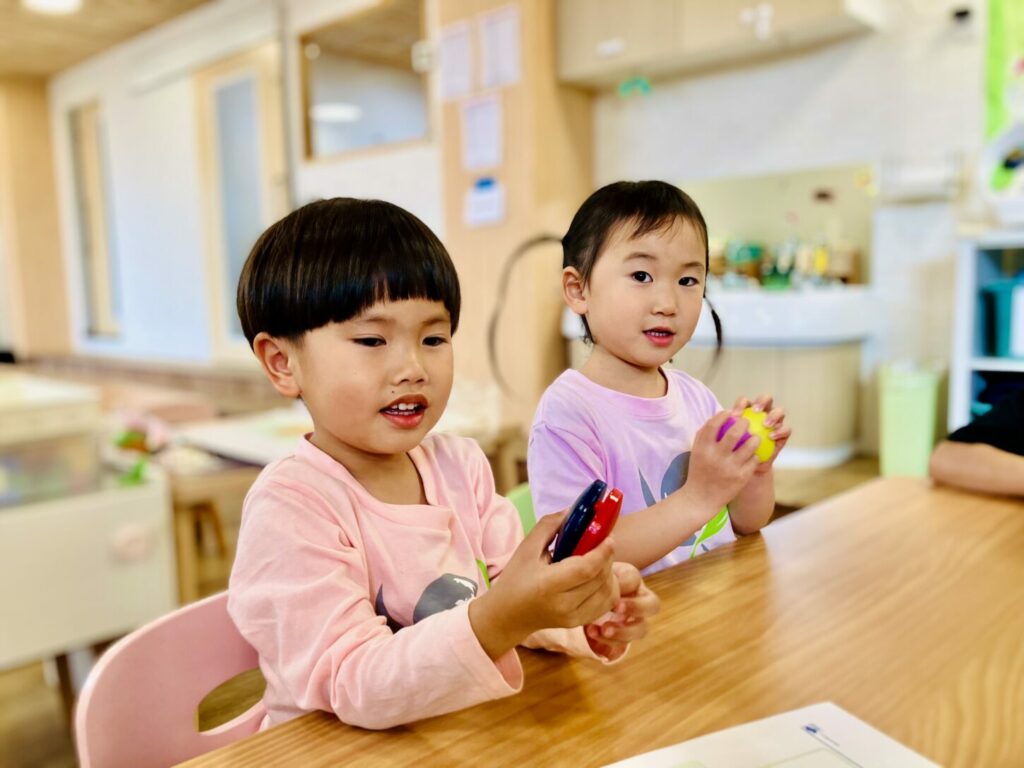
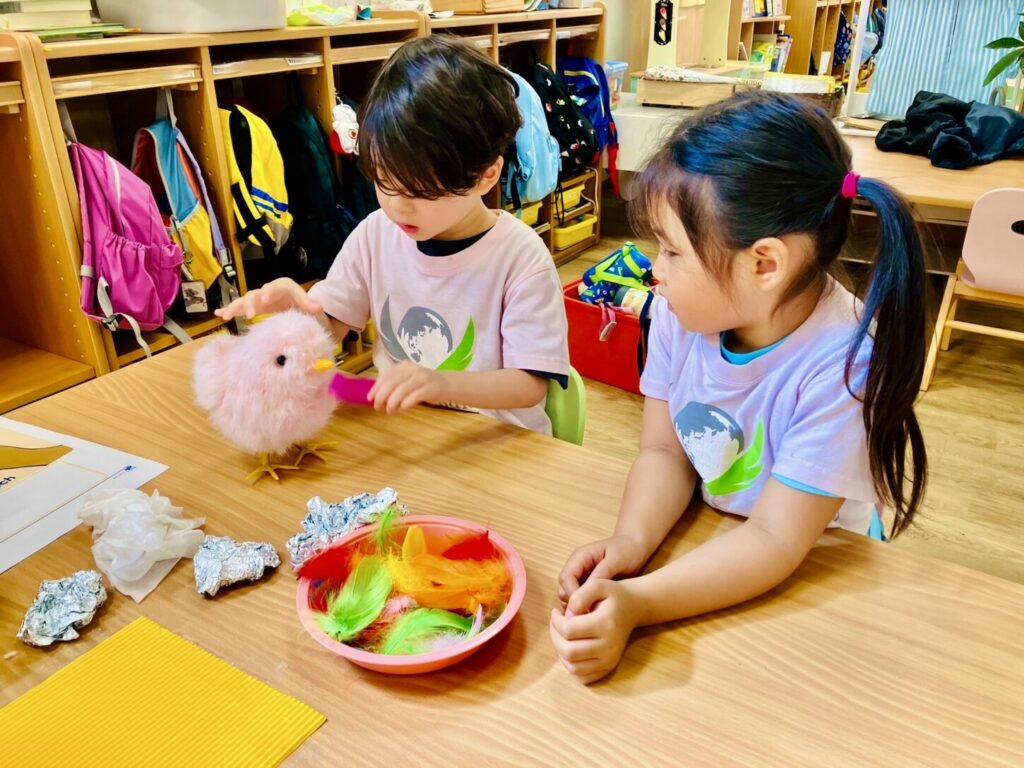
On the first day, before snack time, we introduced the five senses and discussed which body parts are connected to each sense: 1日目のスナックタイムの前に、まず五感について紹介し、それぞれの感覚がどの体の部分に関係しているのかを話し合いました。
- Eyes for seeing / 見るための目
- Ears for hearing/ 聞くための耳
- Nose for smelling/ 匂いをかぐための鼻
- Skin for touching/ 触れるための皮膚
- Tongue for tasting/ 味わうための舌
This discussion set the stage for a more mindful snack experience. As the children enjoyed their food, they naturally began using sensory language to describe what they were experiencing. Some children shared, “The jelly is sweet and yummy!” while others said, “It smells so good!” These reflections helped reinforce how taste and smell are closely connected.
この話し合いを通して、子どもたちはより意識的にスナックタイムを過ごすことができました。食べながら、「ゼリーが甘くておいしい!」「いいにおいがする!」など、自然と感覚を使った表現が飛び出しました。こうした振り返りによって、「味覚」と「嗅覚」のつながりについても理解を深めることができました。
In the afternoon, we expanded the experience by setting up three sensory learning stations focused on hearing, seeing, and touching. Through these activities, the children engaged in open-ended exploration and strengthened their understanding of how the senses help us learn and interact with our surroundings.
午後には、「聴く」「見る」「触れる」に焦点を当てた三つの感覚遊びの学習ステーションを用意しました。子どもたちは自由に探索しながら、五感がどのように学びや周囲との関わりに役立つのかを体験的に学びました。
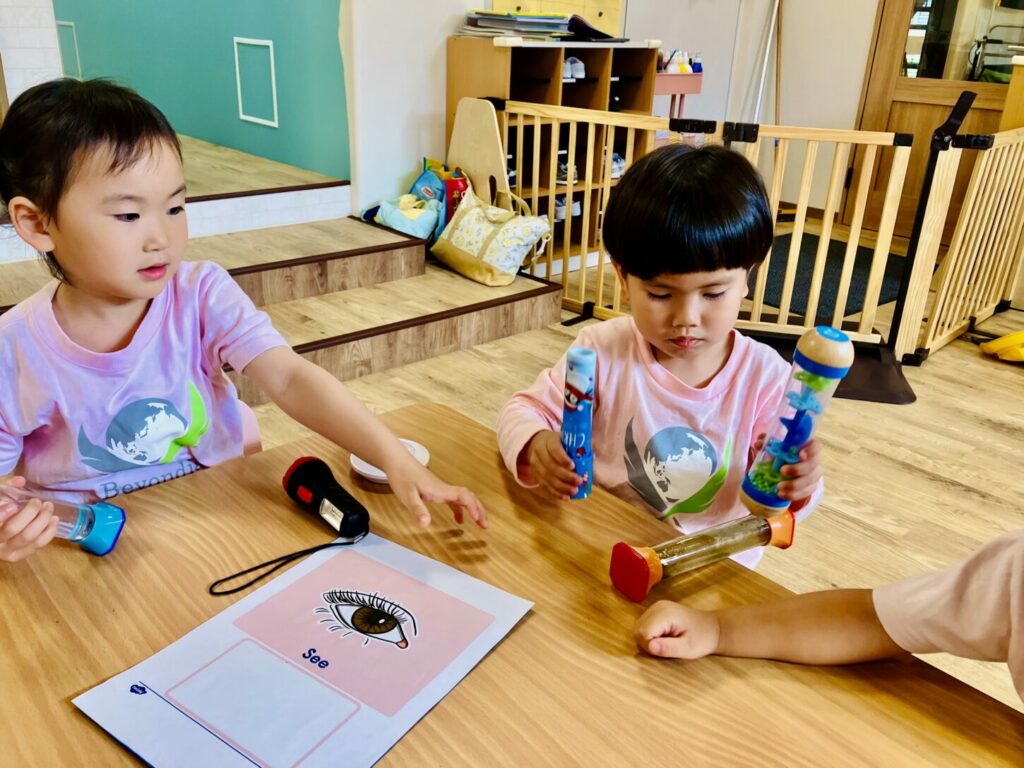
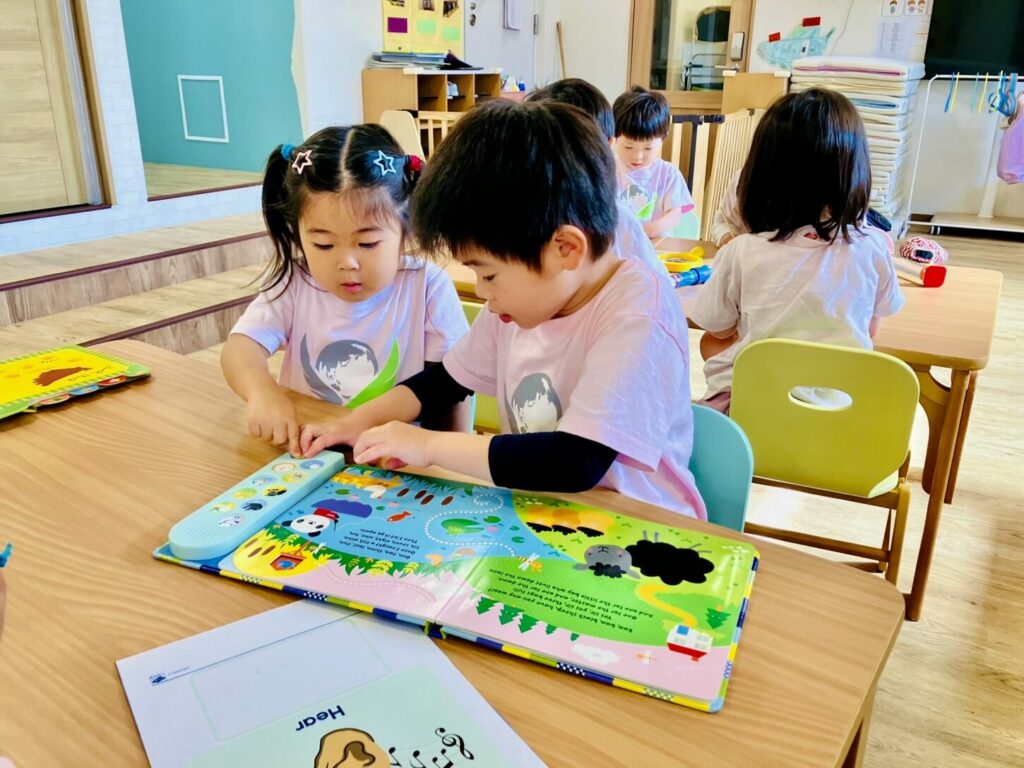

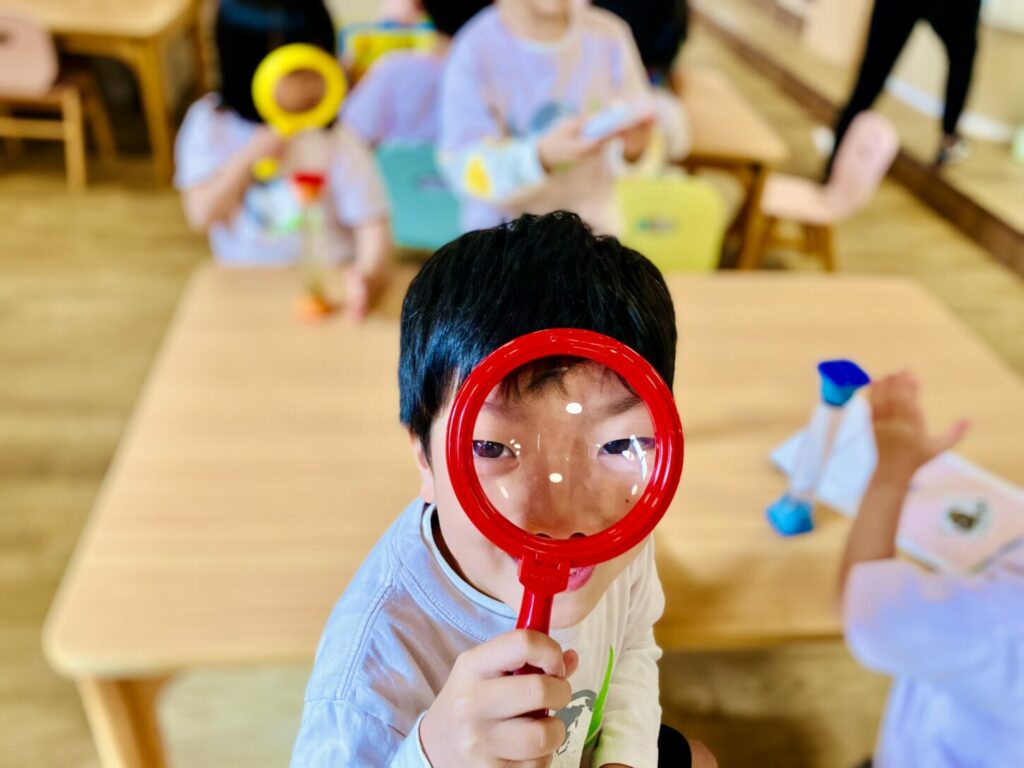
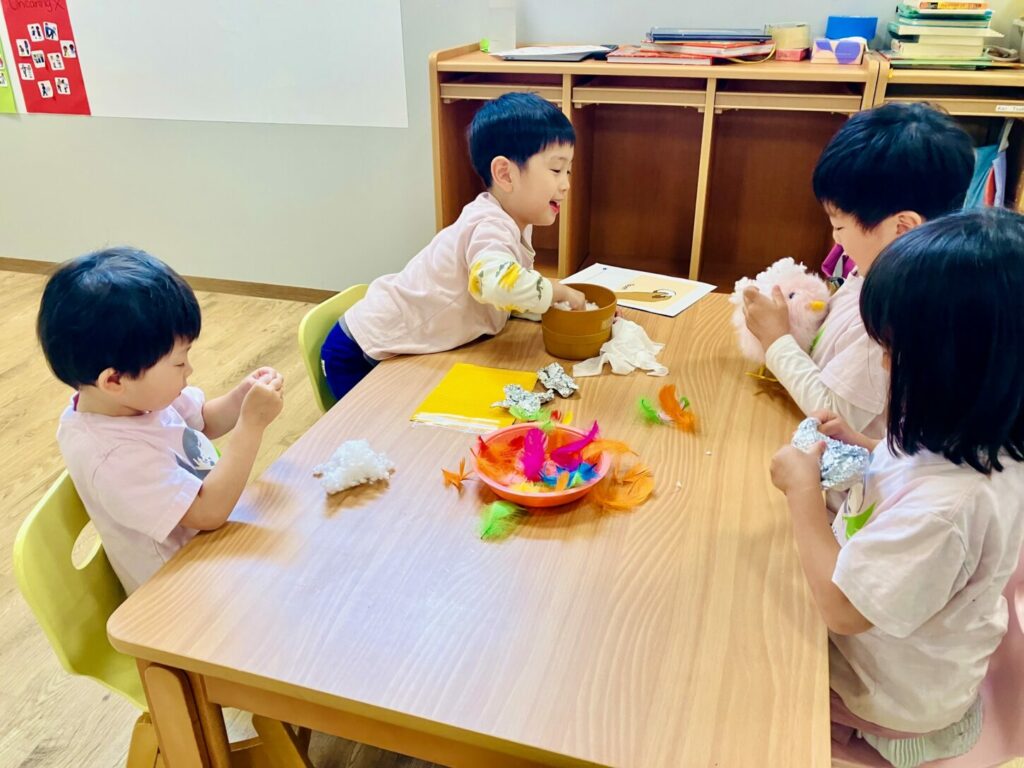
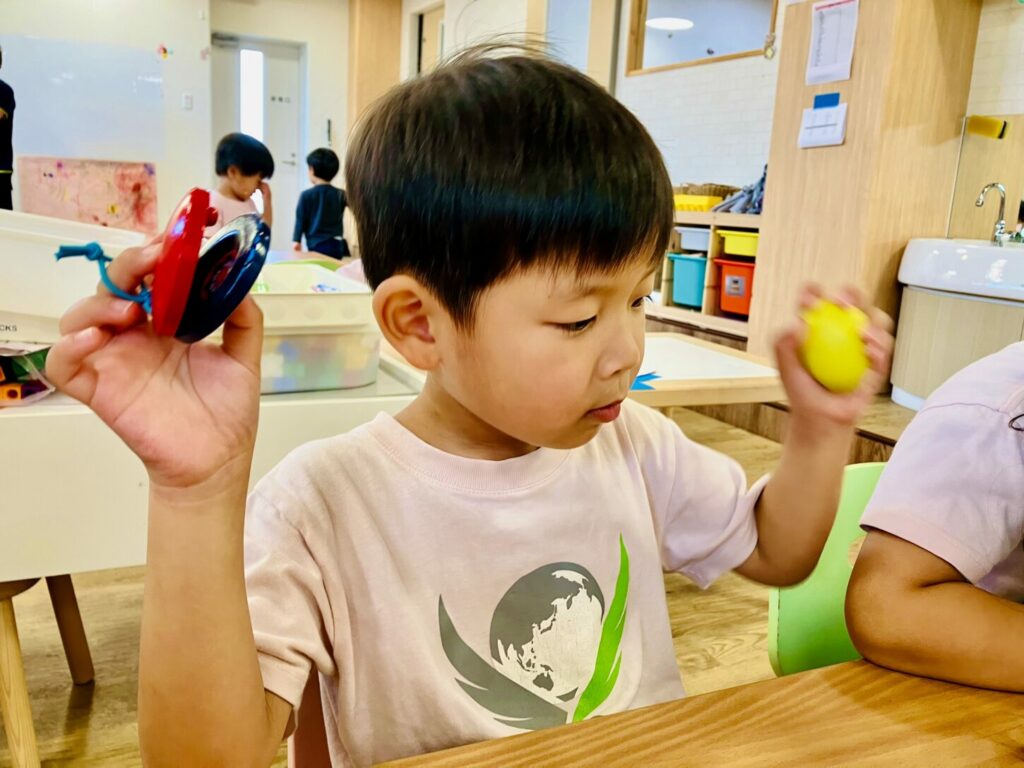
The next morning, we began with a fun review game. Using flashcards of body parts, the children identified which sense each one was related to. For example, when shown an eye, a K3 student confidently answered, “see.” When a picture of a nose was shown, a K2 child responded by pretending to smell.
翌日の朝は、五感の復習ゲームからスタート。体の部位が描かれたフラッシュカードを使い、それぞれがどの感覚とつながっているのかを考えました。たとえば、「目」のカードを見て、K3の子が「見る!」と自信をもって答えたり、「鼻」のカードを見て、K2の子が匂いをかぐ仕草を見せたりしました。
The activity continued with sorting the flashcards into categories under each of the five senses. This sparked a lively conversation when a picture of a trash bin appeared. One child suggested it belonged under “see” and “smell,” while another asked if it could also be “touch.” A thoughtful K2 student replied, “It’s dirty, so we shouldn’t touch it,” showing an impressive ability to apply reasoning and personal judgment.
その後、フラッシュカードを五感のカテゴリに分ける活動を行いました。ごみ箱のカードが出てきたときには活発な議論が生まれました。ある子は「見る」と「嗅ぐ」に入ると考え、別の子は「触る」にも入るかを尋ねました。それに対し、K2の子が「汚いから触っちゃだめだよ」と答え、物事を考えて判断する力を見せてくれました。
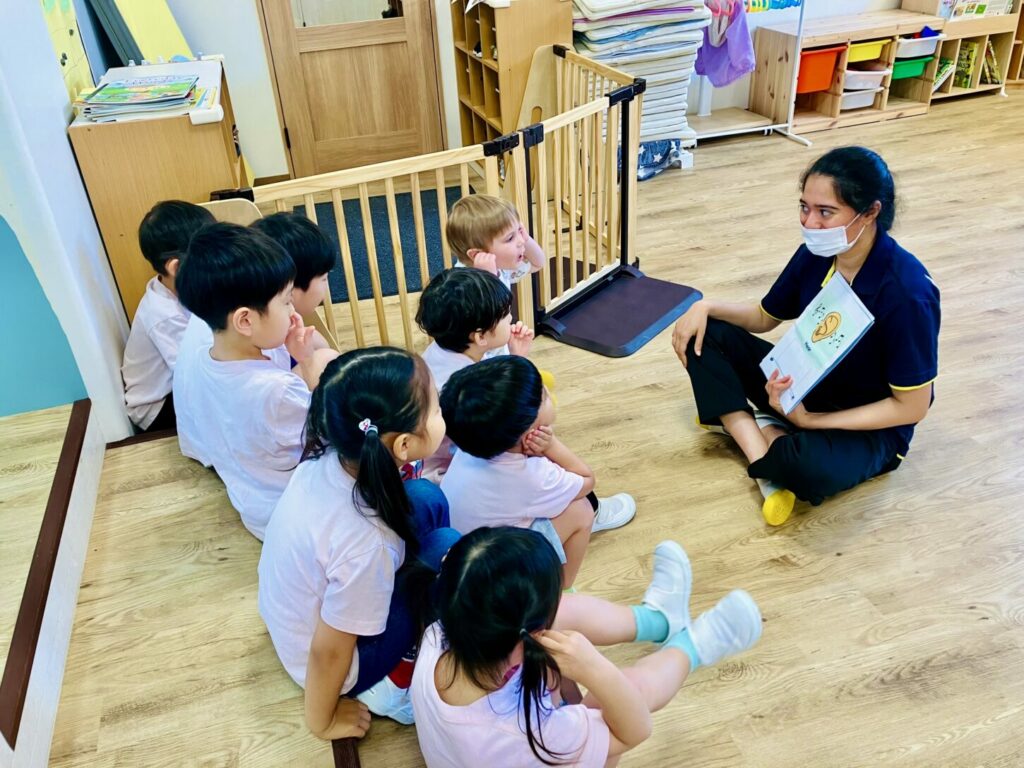


Through this inquiry-based approach, the children not only learned about the five senses but also demonstrated growth in communication, critical thinking, and social awareness.
探究的なアプローチを通して、子どもたちは五感について学んだだけでなく、コミュニケーション力、批判的思考力、そして社会的な意識の成長も見られました。

